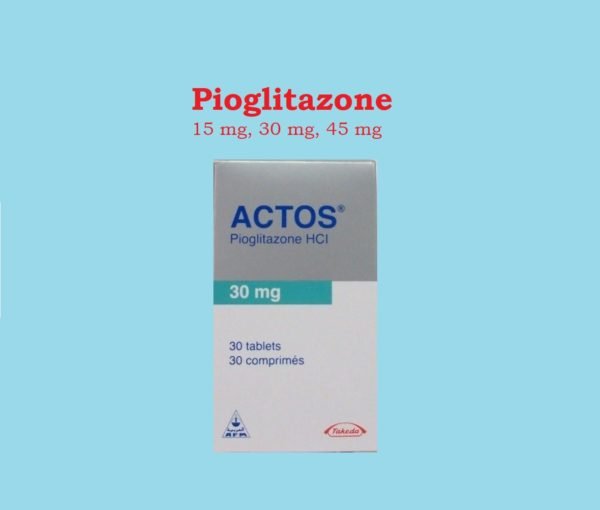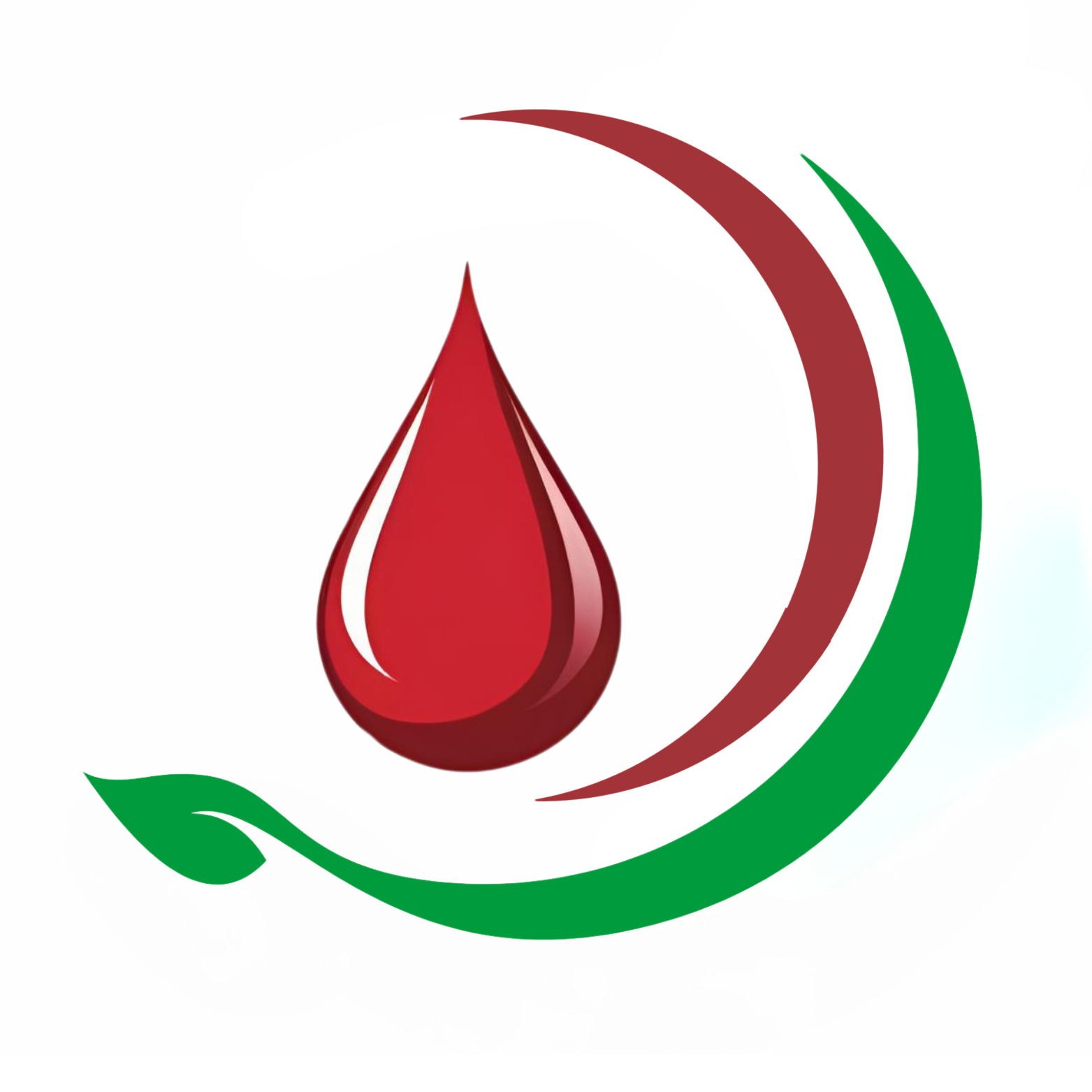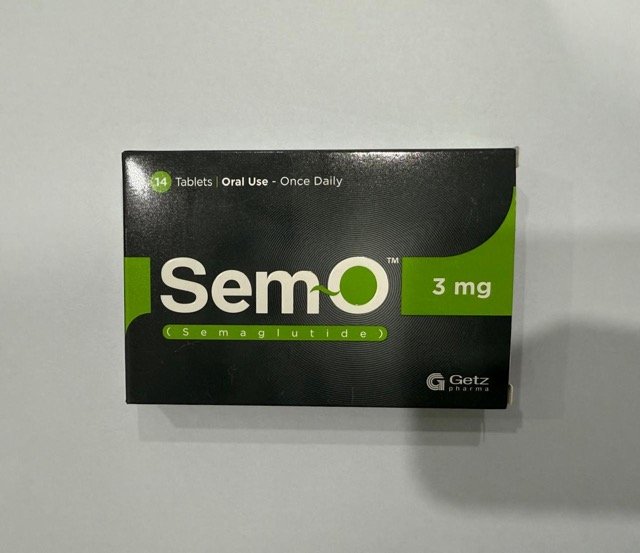Patients with Diabetes Mellitus Type 2 may get pioglitazone (Actos) alone or in combination with other diabetes medicines. It is also available in combination with other medicines such as glimepiride and metformin. Rosiglitazone belongs to the same class of medicine, however, because of its association with heart failure, it is no more available in the markets. Pioglitazone also causes fluid retention, weight gain, and eye problems and is, therefore, less favored nowadays.
Indications of Pioglitazone:
-
Type II Diabetes mellitus:
- In combination to diet and exercise, it is used to enhance glycemic control in persons with type 2 diabetes mellitus.
- It is also used as off-lable medicine in the treatment of fatty liver diseases.
Pioglitazone (Actos) Dose in Adults
Pioglitazone (Actos) use in the Treatment of Type 2 Diabetes mellitus:
Pioglitazone (Actos) usual initial dose:
- 15 to 30 mg orally once per day.
-
Dose in patients with asymptomatic NYHA class I or II heart failure:
- Start off slowly with 15 mg orally once daily.
- Note: Contraindicated in people with heart failure in stages III or IV and not advised in those with symptomatic heart failure.
-
Dosage titration:
- Up to 45 mg once daily depending on HbA1C; in the event of heart failure, consider limiting dose to 30 mg/day while carefully monitoring any negative side effects (such as weight gain, edoema, or signs/symptoms of heart failure).
-
Dosage adjustment for hypoglycemia with combination therapy:
- If taking sulphonylureas at the same time, the dose should be reduced.
- 10% to 25% dose reduction when using insulin.
-
Dosage adjustment with strong CYP2C8 inhibitors (eg, gemfibrozil):
- Maximum recommended dose: 15 mg once daily.
-
Use in Children with Diabetes:
The safety and efficacy of the drug in children has not been established.
Pregnancy Risk Category: C
- The information regarding pregnancy and pioglitazone is not available.
- For glucose control, you should also use other agents during pregnancy
- Thiazolidinediones may increase your risk of getting pregnant. It can induce ovulation in premenopausal women who are ovulatory.
- Thiazolidinediones should not be used in females under the age of 18.
Pioglitazone use during breastfeeding
- If the medication is released in breast milk is unknown.
- According to the manufacturer breastfeeding during therapy is a decision that should be made after considering the risks and benefits to the infant as well as the benefits to the mother.
Pioglitazone (Actos) Dose adjustment in renal disease:
No dosage change is required.
Pioglitazone Dose adjustment in liver disease:
-
Hepatic impairment before initiation
- There is no dosage adjustment; if your baseline liver tests are abnormal, proceed with caution.
-
Treatment for hepatic impairment: If you suspect liver injury:
- It is important to withhold treatment and have serum liver tests done. This will allow you to investigate possible causes.
- Hold therapy if an alternative cause is not found and ALT >3x the upper normal limit
- Only if a different aetiology has been found may therapy be used.
Common Side Effects of Pioglitazone (Actos):
-
Cardiovascular:
- Edema
-
Endocrine and metabolic:
- Hypoglycemia
-
Respiratory:
- Upper respiratory tract infection
Rare Side Effects of Pioglitazone:
-
Cardiovascular:
- Cardiac failure
-
Central nervous system:
- Headache
-
Neuromuscular & skeletal:
- Bone fracture
- Myalgia
-
Respiratory:
- Sinusitis
- Pharyngitis
Frequency of side effects Not Defined:
-
Endocrine & Metabolic:
- Decreased Serum Triglycerides
- Increased HDL-Cholesterol
- Weight Gain
- Weight Loss
-
Hematologic & Oncologic:
- Decreased Hematocrit
- Decreased Hemoglobin
Contraindications to Pioglitazone:
- Intolerance to pioglitazone and any other formulation ingredient
- NYHA Class III/IV Heart Failure
- Pregnancy
- Any stage of heart disease (eg NYHA Class I II, III, IV).
- Liver impairment severe
- Hematuria macroscopica
- A history of bladder carcinoma or active bladder malignancy
Warnings and precautions
-
Bladder cancer
- Pioglitazone can increase the risk of bladder malignancy. Patients with active bladder cancer should avoid it.
-
Edema
- Pre-existing edema may be exacerbated or new onset.
-
Fractures
- Females who have been treated with pioglitazone, especially the lower limbs and distal uppers, are at greater risk of breaking bones.
-
Heart Failure/cardiac Effects: [US Boxed Warn]
- Thiazolidinediones and pioglitazone can either induce or aggravate cardiac disease. Rapid weight gain, dyspnea, and edoema could result from this.
- It is necessary to reduce the dose and avoid its use in patients with symptomatic heart disease.
-
Hematologic effects
- Anemia can result from a decreased Hb/hematocrit, probably because of an increase in plasma volume.
-
Hepatic effects
- Severe hepatic dysfunction can be observed.
- During therapy, it is important to monitor for any signs or symptoms of liver injury.
-
Hypoglycemia
- Pioglitazone should not be taken with insulin or any other diabetes medications. A dosage reduction is necessary to reduce the risk of hypoglycemia.
-
Macular edema
- Pioglitazone can cause macular edema, which is characterized by blurred vision and decreased visual acuity.Patients should undergo regular eye examinations while receiving therapy.
-
Weight loss
- Weight gain due to dose-related factors such as fluid retention and fat deposition can occur.
-
Bariatric surgery
- Absorption altered:
- Absorption can be affected by changes during gastrectomy/sleeve operation.
- Weight loss
- Gastric bypass results in weight gain. Other agents should also be considered.
- Absorption altered:
-
Type 1 Diabetes
- It is not recommended for type 1 diabetes and diabetic ketoacidosis patients. Insulin is required to activate the mechanism.
-
Hepatic impairment
- It is crucial to undertake liver function tests both before and after the treatment to rule out liver impairment.
- Therapy should be observed for any indications of liver damage (e.g., fatigue, anorexia and jaundice, dark urine or right upper abdominal discomfort).
- Therapy should be stopped if these side effects appear.
- If serum ALT is 3x ULN or above without a known reason for it, therapy should be halted.
- Patients at high risk of severe drug-induced liver injury have blood ALT levels that are three times the upper limit of normal or serum total bilirubin levels that are two times the upper limit of normal.
Pioglitazone: Drug Interaction
|
Abiraterone Acetate |
May increase the serum concentration of CYP2C8 Substrates (High risk with Inhibitors). |
|
Alpha-Lipoic Acid |
May enhance the hypoglycemic effect of Antidiabetic Agents. |
|
Androgens |
May enhance the hypoglycemic effect of Blood Glucose Lowering Agents. Exceptions: Danazol. |
|
Clopidogrel |
May increase the serum concentration of Pioglitazone. |
|
CYP2C8 Inhibitors (Moderate) |
May decrease the metabolism of CYP2C8 Substrates (High risk with Inhibitors). |
|
Deferasirox |
May increase the serum concentration of CYP2C8 Substrates (High risk with Inhibitors). |
|
Direct Acting Antiviral Agents (HCV) |
May enhance the hypoglycemic effect of Antidiabetic Agents. |
|
Guanethidine |
May enhance the hypoglycemic effect of Antidiabetic Agents. |
|
Hyperglycemia-Associated Agents |
May diminish the therapeutic effect of Antidiabetic Agents. |
|
Hypoglycemia-Associated Agents |
Antidiabetic Agents may enhance the hypoglycemic effect of Hypoglycemia-Associated Agents. |
|
Lumacaftor |
May increase the serum concentration of CYP2C8 Substrates (High Risk with Inhibitors or Inducers). Lumacaftor may decrease the serum concentration of CYP2C8 Substrates (High Risk with Inhibitors or Inducers). |
|
Maitake |
May enhance the hypoglycemic effect of Blood Glucose Lowering Agents. |
|
Monoamine Oxidase Inhibitors |
May enhance the hypoglycemic effect of Blood Glucose Lowering Agents. |
|
Pegvisomant |
May enhance the hypoglycemic effect of Blood Glucose Lowering Agents. |
|
Pregabalin |
May enhance the fluid-retaining effect of Thiazolidinediones. |
|
Prothionamide |
May enhance the hypoglycemic effect of Blood Glucose Lowering Agents. |
|
Quinolones |
May enhance the hypoglycemic effect of Blood Glucose Lowering Agents. Quinolones may diminish the therapeutic effect of Blood Glucose Lowering Agents. Specifically, if an agent is being used to treat diabetes, loss of blood sugar control may occur with quinolone use. |
|
Ritodrine |
May diminish the therapeutic effect of Antidiabetic Agents. |
|
Salicylates |
May enhance the hypoglycemic effect of Blood Glucose Lowering Agents. |
|
Selective Serotonin Reuptake Inhibitors |
May enhance the hypoglycemic effect of Blood Glucose Lowering Agents. |
|
Thiazide and Thiazide-Like Diuretics |
May diminish the therapeutic effect of Antidiabetic Agents. |
|
Topiramate |
May decrease the serum concentration of Pioglitazone. |
|
Trimethoprim |
Thiazolidinediones' metabolism might be slowed down. |
|
CYP2C8 Inhibitors (Strong) |
Pioglitazone's serum levels can rise. Management: When used with any potent CYP2C8 inhibitor, the maximum daily dose of pioglitazone for adults should not exceed 15 mg. |
|
Dabrafenib |
May decrease the serum concentration of CYP2C8 Substrates (High risk with Inducers). Management: Seek alternatives to the CYP2C8 substrate when possible. If concomitant therapy cannot be avoided, monitor clinical effects of the substrate closely (particularly therapeutic effects). |
|
Gemfibrozil |
May decrease the metabolism of Thiazolidinediones. Management: Limit pioglitazone maximum adult dose to 15 mg/day, and consider dose reduction of rosiglitazone, when used in combination with gemfibrozil. |
|
Insulins |
Pioglitazone may intensify Insulin's harmful or toxic effects. In particular, this combination may increase the risk for hypoglycemia, fluid retention, and heart failure. Management: To lower the risk of hypoglycemia when insulin and pioglitazone are combined, dose reductions should be taken into account. Patients should be watched for fluid retention and symptoms of heart failure. |
|
MiFEPRIStone |
May increase the serum concentration of CYP2C8 Substrates (High risk with Inhibitors). Management: Use CYP2C8 substrates at the lowest recommended dose, and monitor closely for adverse effects (including myopathy), during and in the 2 weeks following mifepristone treatment. |
|
RifAMPin |
May increase the metabolism of Thiazolidinediones. Management: Consider alternatives to the concomitant use of rifampin with thiazolidinedione antidiabetic agents. Monitor patients receiving these combinations for decreased effects of the thiazolidinedione derivative. |
|
Sulfonylureas |
Thiazolidinediones may enhance the hypoglycemic effect of Sulfonylureas. Management: Consider sulfonylurea dose adjustments in patients taking thiazolidinediones and monitor for hypoglycemia. |
Monitoring parameters:
- Blood glucose levels
- Hemoglobin A (at minimum twice per year)
- Before and after therapy, liver enzymes (ALT and AST, alkaline phosphatase and total bilirubin).
- Weight gain
- Ophthalmic examination
- Heart failure symptoms and signs
- Signs and symptoms of bladder cancer include dysuria (macroscopic hematuria), dysuria, and urinary urgency.
How to administer Pioglitazone (Actos)?
- It can be given orally without regard to food.
Mechanism of action of Pioglitazone (Actos):
- Pioglitazone, a thiazolidinedione anti-hyperglycemic agent, is also known as Pioglitazone.
- It enhances target cell insulin sensitivity, which lowers blood sugar levels and boosts pancreatic insulin output.
- To function, it needs insulin. Peroxisome proliferator activated receptor-gamma is strongly and specifically agonist by the drug pioglitazone (PPARgamma).
- The expression of numerous genes involved in lipid or glucose metabolism can be affected by the activation of the PPARgamma receptors.
- Renal collecting tubule cells contain higher concentrations of PPAR gamma.
- Thiazolidinedione stimulation increases sodium reabsorption, which leads to fluid retention.
The beginning of action: Delayed Peak effectGlucose control can be done for several weeks.
Protein bindingPioglitazone >99%, active metabolites>98%; primarily to Albumin
Metabolism: Hepatic (99%), via CYP2C8 or 3A4 to active metabolites. M-III, MIV are the major circulating active metabolites
Eliminating half-life Parent drug: 3-7 hours M-III and M–IV metabolites: 16-24 hours
Time to reach peak: 2 hours; delayed when you eat Excretion: Found in urine (25-30%) and feces as metabolites
International Brands of Pioglitazone:
- Actos
- ACCEL Pioglitazone
- ACH-Pioglitazone
- ACT Pioglitazone
- Actos
- APO-Pioglitazone
- AuroPioglitazone
- DOM-Pioglitazone
- JAMP-Pioglitazone
- MINT-Pioglitazone
- MYLANPioglitazone
- PHL-Pioglitazone
- PMS-Pioglitazone
- PRO-Pioglitazone
- RANPioglitazone
- RATIO-Pioglitazone
- SANDOZ Pioglitazone
- TEVA-Pioglitazone
- VANPioglitazone
- Accotaz
- Acpio
- Acstin
- Actos
- Actozon
- Actozone
- Anxotos
- Apogar
- Cereluc
- Chronoreg
- Deculin
- Diabetin
- Diabetone
- Diaglit
- DMZone
- Gitazone
- Glacera
- Glezone
- Gliabetes
- Glidipion
- Gliozac
- Glita
- Glitaz
- Glitis
- Glito
- Glitter
- Glizone
- Glubosil
- Glucemin
- Gluconon
- Glustin
- Glutason
- Insulact
- Insulact Forte
- Kai Bao Wei Yuan
- Lispecip
- Newpio
- Nilgar
- Ogli
- Paglitaz
- Pidus
- Pio
- Pioglit
- Pioglite
- Piolidone
- Piomed
- Piomin
- Pionix
- Piosafe 15
- Piosugar
- Piota
- Piouno
- Piozer
- Piozon
- Piozone
- Pizaccord
- Politone
- Ppar
- Prabetic
- Prialta
- Protaz
- Relexil
- Senzulin
- Uniglit
- Utmos
- Vexazone
- Zactos
- Zacts
- Zolid
Pioglitazone Brands in Pakistan:
Pioglitazone 15 mg Tablets |
|
| Diactal | Reko Pharmacal (Pvt) Ltd. |
| Diacto | Consolidated Chemical Laboratories (Pvt) Ltd. |
| Diglyta | Zafa Pharmaceutical Laboratories (Pvt) Ltd. |
| Digolitazone | Tg Pharma |
| Dizone | Nabiqasim Industries (Pvt) Ltd. |
| Dowglit | Martin Dow Pharmaceuticals (Pak) Ltd. |
| Dowgut | Martin Dow Pharmaceuticals (Pak) Ltd. |
| Fantasia | Wilshire Laboratories (Pvt) Ltd. |
| Glapio | Afta Pharma |
| Gliden | Helix Pharma (Private) Limited |
| Glitascot | Scotmann Pharmaceuticals |
| Gliter | Mass Pharma (Private) Limited |
| Glitlite | Medi Plus Pharma |
| Glitos | Searle Pakistan (Pvt.) Ltd. |
| Glitzer | Tabros Pharma |
| Glyrol | Medisure Laboratories Pakistan (Pvt.) Ltd. |
| Ligazo | Pfizer Laboratories Ltd. |
| Lotophage Plus | Lotus Pharmaceuticals (Pvt) Ltd |
| Piobetic | Genix Pharma (Pvt) Ltd |
| Piocan | Candid Pharmaceuticals |
| Pioget | Platinum Pharmaceuticals (Pvt.) Ltd. |
| Pioglotin | Leads Pharma (Pvt) Ltd |
| Pioglotin | Leads Pharma (Pvt) Ltd |
| Pion T | Ferroza International Pharmaceuticals (Pvt) Ltd. |
| Piotec | Panacea Pharmaceuticals |
| Piotone | Atco Laboratories Limited |
| Piozer | Hilton Pharma (Pvt) Limited |
| Piozon | Rehmat Pharma |
| Piozone | Pulse Pharmaceuticals |
| Pitaz | Macter International (Pvt) Ltd. |
| Poze | Agp (Private) Ltd. |
| Pyctos | Highnoon Laboratories Ltd. |
| Rangon | V Care International |
| Tagozer | Bryon Pharmaceuticals (Pvt) Ltd. |
| Tazoger-G | Bryon Pharmaceuticals (Pvt) Ltd. |
| Zeal | Maple Pharmaceuticals (Pvt) Ltd |
| Zolid | Getz Pharma Pakistan (Pvt) Ltd. |
Pioglitazone 30 mg Tablets |
|
| Diactal | Reko Pharmacal (Pvt) Ltd. |
| Diacto | Consolidated Chemical Laboratories (Pvt) Ltd. |
| Diglyta | Zafa Pharmaceutical Laboratories (Pvt) Ltd. |
| Dizone | Nabiqasim Industries (Pvt) Ltd. |
| Dowglit | Martin Dow Pharmaceuticals (Pak) Ltd. |
| Dowgut | Martin Dow Pharmaceuticals (Pak) Ltd. |
| Fantasia | Wilshire Laboratories (Pvt) Ltd. |
| Glapio | Afta Pharma |
| Gliden | Helix Pharma (Private) Limited |
| Glitascot | Scotmann Pharmaceuticals |
| Gliter | Mass Pharma (Private) Limited |
| Glitlite | Medi Plus Pharma |
| Glitos | Searle Pakistan (Pvt.) Ltd. |
| Glitzer | Tabros Pharma |
| Glyrol | Medisure Laboratories Pakistan (Pvt.) Ltd. |
| Ligazo | Pfizer Laboratories Ltd. |
| Pagzan | Medizan Labs (Pvt) Ltd |
| Piobetic | Genix Pharma (Pvt) Ltd |
| Piofit | Schazoo Zaka |
| Pioget | Platinum Pharmaceuticals (Pvt.) Ltd. |
| Piokure | Kurative Pak (Pvt) Ltd |
| Piokure | Kurative Pak (Pvt) Ltd |
| Pion T | Ferroza International Pharmaceuticals (Pvt) Ltd. |
| Piotec | Panacea Pharmaceuticals |
| Piotone | Atco Laboratories Limited |
| Piozer | Hilton Pharma (Pvt) Limited |
| Piozon | Rehmat Pharma |
| Piozone | Pulse Pharmaceuticals |
| Pitaz | Macter International (Pvt) Ltd. |
| Poze | Agp (Private) Ltd. |
| Pyctos | Highnoon Laboratories Ltd. |
| Rangon | V Care International |
| Tagozer | Bryon Pharmaceuticals (Pvt) Ltd. |
| Zeal | Maple Pharmaceuticals (Pvt) Ltd |
| Zolid | Getz Pharma Pakistan (Pvt) Ltd. |
Pioglitazone 45 mg Tablets |
|
| Diactal | Reko Pharmacal (Pvt) Ltd. |
| Diacto | Consolidated Chemical Laboratories (Pvt) Ltd. |
| Dizone | Nabiqasim Industries (Pvt) Ltd. |
| Dowglit | Martin Dow Pharmaceuticals (Pak) Ltd. |
| Dowgut | Martin Dow Pharmaceuticals (Pak) Ltd. |
| Fantasia | Wilshire Laboratories (Pvt) Ltd. |
| Glapio | Afta Pharma |
| Gliden | Helix Pharma (Private) Limited |
| Glitascot | Scotmann Pharmaceuticals |
| Gliter | Mass Pharma (Private) Limited |
| Glitlite | Medi Plus Pharma |
| Glitos | Searle Pakistan (Pvt.) Ltd. |
| Glitzer | Tabros Pharma |
| Glyrol | Medisure Laboratories Pakistan (Pvt.) Ltd. |
| Ligazo | Pfizer Laboratories Ltd. |
| Piobetic | Genix Pharma (Pvt) Ltd |
| Piofit | Schazoo Zaka |
| Pioget | Platinum Pharmaceuticals (Pvt.) Ltd. |
| Piokure | Kurative Pak (Pvt) Ltd |
| Piotec | Panacea Pharmaceuticals |
| Piotone | Atco Laboratories Limited |
| Piozer | Hilton Pharma (Pvt) Limited |
| Piozone | Pulse Pharmaceuticals |
| Pitaz | Macter International (Pvt) Ltd. |
| Poze | Agp (Private) Ltd. |
| Pyctos | Highnoon Laboratories Ltd. |
| Rangon | V Care International |
| Tagozer | Bryon Pharmaceuticals (Pvt) Ltd. |
| Zeal | Maple Pharmaceuticals (Pvt) Ltd |
| Zolid | Getz Pharma Pakistan (Pvt) Ltd. |



.jpeg)



